Repotting Clinic - Cattleya
See also: Repotting Phalaenopsis and Repotting Ludisia
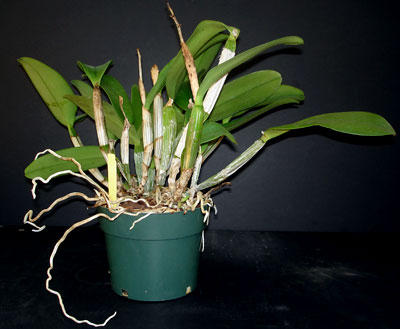
This clinic is an example of the repotting process. We have a newly acquired cattleya that has just finished blooming and is ready for repotting.
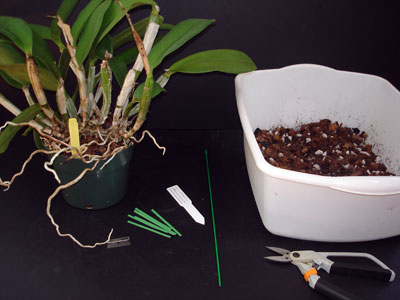
First we gather together the supplies that we need. We have placed some Cattleya Blend into a clean dishpan and rinsed it with water.
We also have a clean pair of clippers that was soaked in Physan & water (1T/Gal), a razor blade, a label, cinnamon and 5 inch clear pot. The orchid is currently in a 4 inch pot.
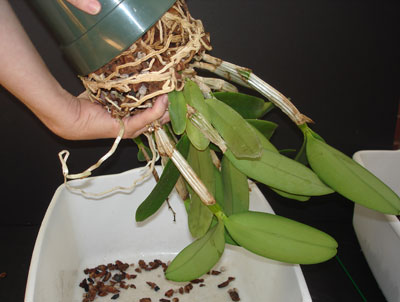
We gently pull the orchid from the pot and get a good first hand look at the roots. They are white, plump and healthy with nice green tips. This is just what we want to see.
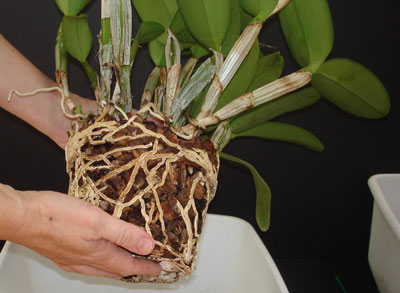
The roots have been winding around the pot and there is very little room for the roots of the next growth season. The mix is not particularly broken down but this orchid needs a bigger pot or the new pseudobulbs will grow outside the pot. We will repot with fresh mix because we do not reuse old mix.
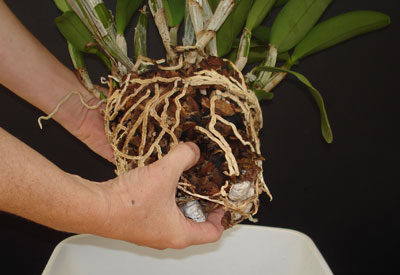
We gently work the old mix out from around the roots. We must take our time and gently tease the pieces of old mix away from the roots.
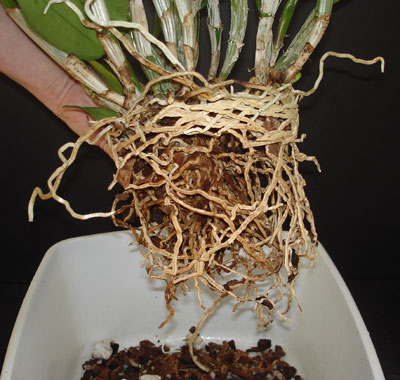
This is our chance to examine the roots closely and look for any that are brown and squishy. We expect we may find a few, especially in the center of the pot but we hope to not find many.
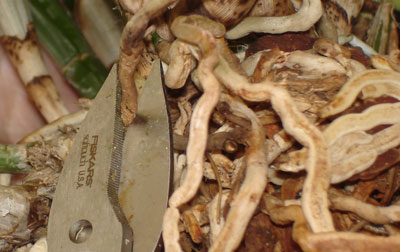
We find that one of the roots is rotted and cut the root just above the rot in the healthy tissue.
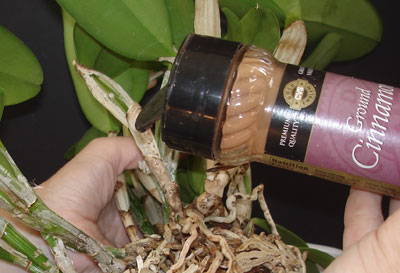
We sprinkle the cut with cinnamon, regular old ground cinnamon from the grocery store. Cinnamon has excellent fungicidal and bactericidal properties and we are hoping to prevent an opportunistic infection developing at the point where we cut.
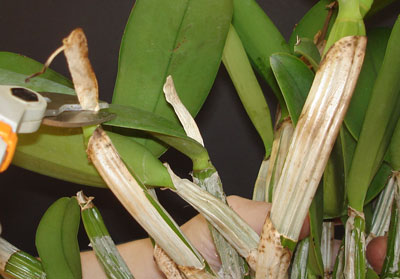
We take this opportunity to clean up the orchid by cutting off the old bloom sheaths.
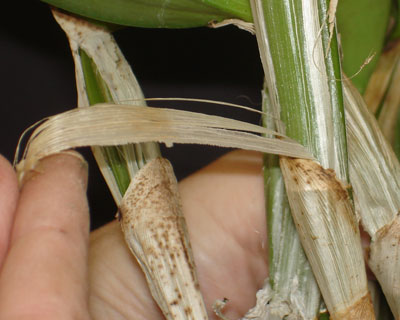
We continue cleaning up the orchid by removing the thin white layer that wraps the pseudobulb. In nature this plant would lose this outer white coating naturally. We pull it off of the pseudobulbs to remove the possibility of bugs using it as a hiding place.
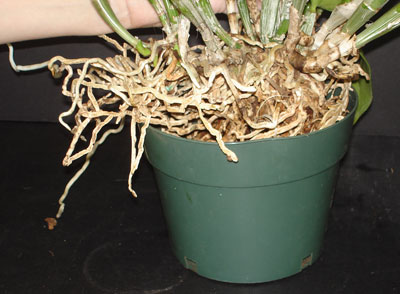
We use the 7" pot that the orchid came out of to judge the size pot we need. It is certainly not going to fit back into this pot.
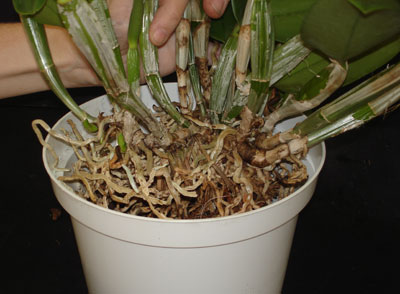
We set the plant into an 8" white pot and find that we like the fit. This orchid has leads on only one side and so we will place the orchid off-center in the pot with the new growth towards the center of the pot.
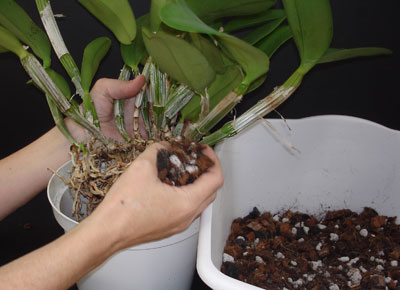
Orchid mix is placed by handfulls into the pot as the orchid is held suspended up from the bottom by about an inch.
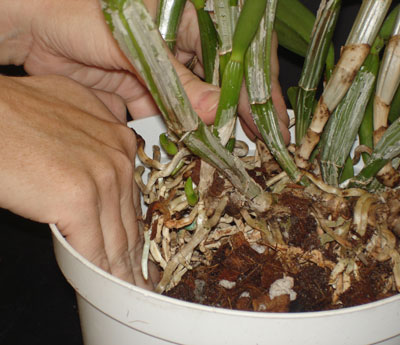
The Cattleya orchid mix is then tucked in and around the roots. We reach down into the pot and tease the mix into the crevises between the roots. We pack the orchid mix quite tightly so that the plant will be firmly set in the pot.

We finish our repotting job by putting a new label in the pot. On the label we indicate the date of repotting, the fact that it was moved up a pot size, and indicate that this plant bloomed last month.
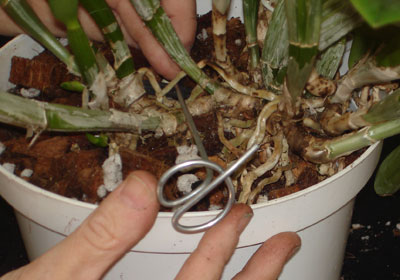
A rhizome clip is placed across the pot to secure the orchid while the roots fill this new pot and secure the plant. We do not want the orchid to be loose in its new mix as any wobbling may break fragile new roots as they grow.
The newly repotted and labeled orchid will be given slightly lower light levels for a few days and then returned to its regular growing spot.










